It looks like you're using an Ad Blocker.
Please white-list or disable AboveTopSecret.com in your ad-blocking tool.
Thank you.
Some features of ATS will be disabled while you continue to use an ad-blocker.
share:
7- The Pratt & Whitney R-4360 Radia Engine


Credits photos goes to WorldPress
6-The Aeternitas mega 4 watch


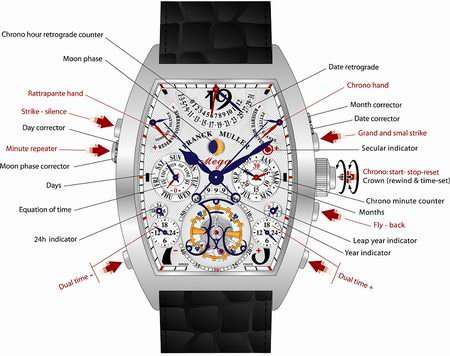
Full complications list and explanations here
5- Tianhe-1A computer
source
Tianhe-1A is using 7,168 NVIDIA Tesla M2050 GPUs and 14,336 Intel Xeon CPUs consuming 4.04 megawatts.

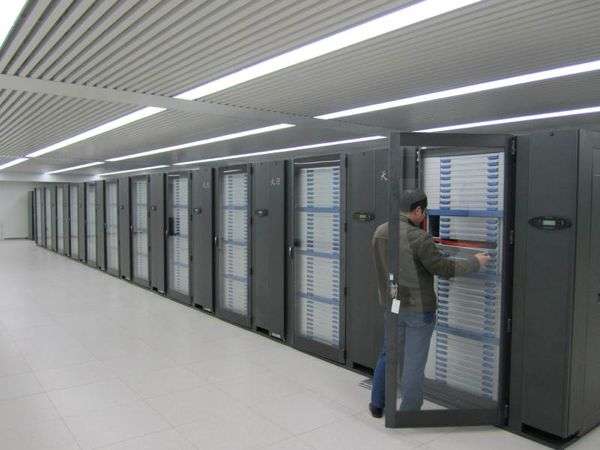
4- The USS New Hampshire (SSN-778)
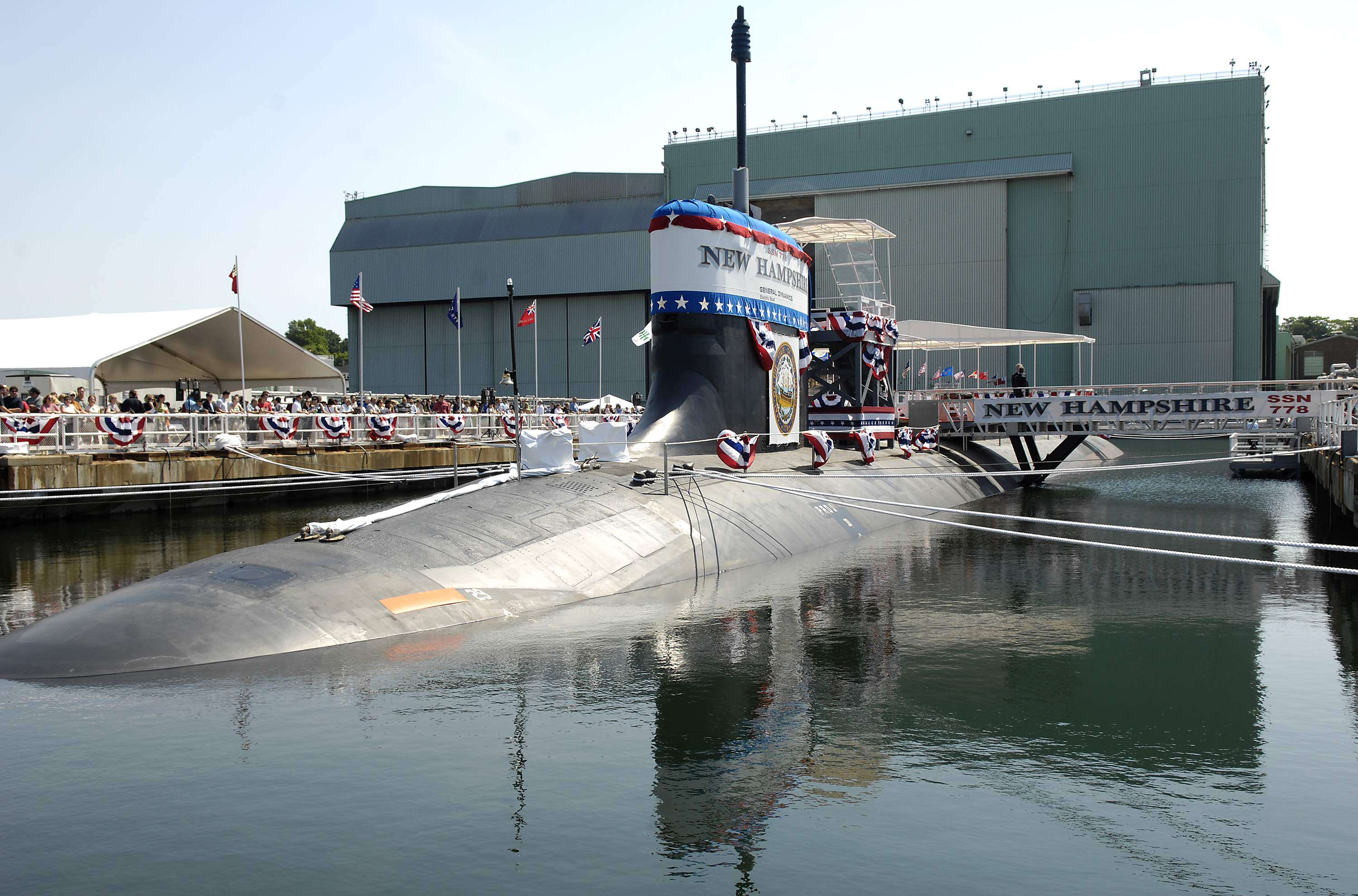
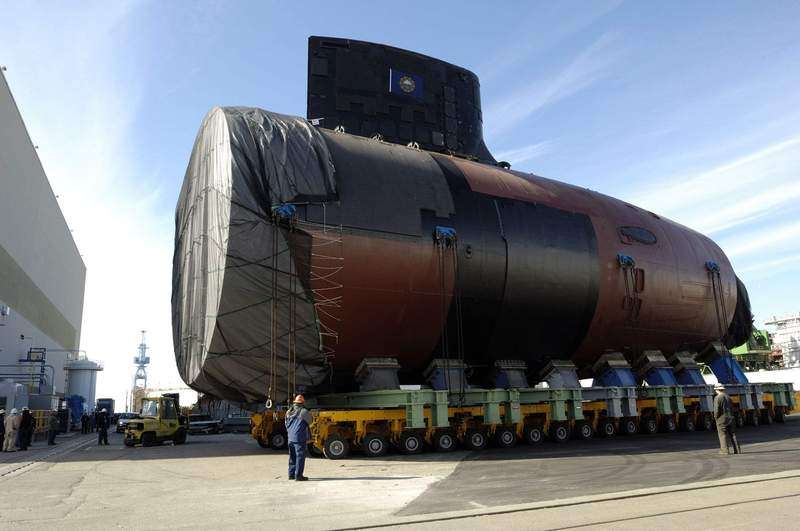
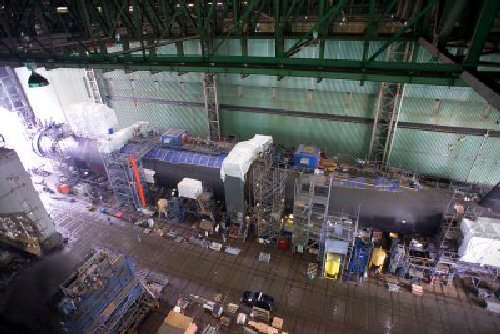
Credits photos: Navsource
3- The Appollo Command Module
Full article here

What impress me the most is the Command Module Main Control panel:

Credits photos: NASA.
2- The Large Hadron Collider
Read the full article here
The LHC is:
-The largest machine in the world...
-The fastest racetrack on the planet...
-The emptiest space in the Solar System...
-The hottest spots in the galaxy, but even colder than outer space...
-The biggest and most sophisticated detectors ever built...
-The most powerful supercomputer system in the world...
Read details on the CERN site

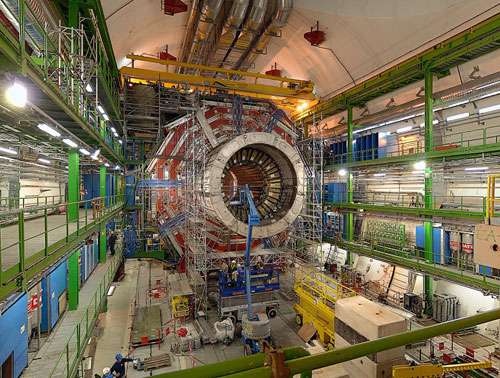
Credits photos APOD
1- The Space Shuttle
Full article here




Credits photos: NASA.
Mod Note (This Appears On Every New Thread/Post Reply Page):
Please make sure every post matters.
Refrain from 1-line or very-minimal responses.
Edit-down your quoted posts to the important part.
Don't use "txting" shorthand in posts.
Use snippets and links for external content.
Provide meaningful comments for links, pictures, and videos.
Mod Note: Starting A New Thread ?... Look Here First.
In 1940 the Pratt & Whitney Corp. started development of what would prove to be the largest, most complex, and most powerful aviation piston engine ever ever built. This engine was built during the WWII but when the war was over none of these engines could be used for combat aircraft. It did, however, power the last generation of large piston-engined aircraft before the turbojet and turboprop took over, these includes: the Boeing B-50 Superfortress, Convair B-36 Peacemaker, Martin AM-1 Mauler, Douglas C-124 Globemaster, and Boeing C-97 Stratocruiser. The Wasp Major was also used in a number of experimental aircraft that did not reach production status, such as the Republic XP-72, Goodyear F2G, and Northrup XB-35 Flying Wing.
Type: Radial Engine
Manufacturer: Pratt and Whitney
Model: R-4360 Wasp Major
Cylinders: 28 supercharged
Rows: 4 rows radial (odd number of engines per row, for valve timing)
Cooling: air cooled
Bore: 146.05 mm
Stroke: 152.4 mm
Displacement: 71.49 L
Length: 2 451 mm
Diameter: 1397 mm
Weight: ~ 1633 kg
Power(HP): 3000 ~ 4300


Credits photos goes to WorldPress
6-The Aeternitas mega 4 watch
36 complications, 25 of them visible, 1,483 components, a 1000-year calendar, a price tag of 2.7 million dollars, and 5 years’ work; 99 jewels...
The glass sapphire case back enables the harmoniously chiselled and decorated pieces that overlap to be admired in a stunning combination as a dazzling ballet. This masterpiece of complications and know how was entirely designed and manufactured by the Franck Muller group and once again demonstrates their vast array of skills and ability in the Art of HAUTE HORLOGERIE.
Reference: 8888 MGA T CCR QPSE
Caliber: FM 3480 QPSE
Movement Mechanic Tourbillon, Carillon Westminster on 4 hammers and 4 gongs, Chronograph with fly-back mechanism and only one push-piece, Perpetual Calendar Secular, Equation of time, Two additional time zones, Automatic self-winding mechnanism for the movement and the Westminster carillon.



Full complications list and explanations here
5- Tianhe-1A computer
Tianhe-I, Tianhe-1, or TH-1 is a supercomputer capable of an Rmax (maximum range) of 2.566 petaFLOPS; that is, over 2½ quadrillion (thousand million million) floating point operations per second, or FLOPS. Located at the National Supercomputing Center in Tianjin, China, it is one of the fastest computers in the world and one of the few Petascale supercomputers in the world.
In October 2010, an upgraded version of the machine (Tianhe-1A) overtook ORNL's Jaguar to become the world's fastest supercomputer, with a peak computing rate of 2.507 petaFLOPS.
Both the original Tianhe-1 and Tianhe-1A use a Linux-based operating system.
source
Tianhe-1A is using 7,168 NVIDIA Tesla M2050 GPUs and 14,336 Intel Xeon CPUs consuming 4.04 megawatts.


4- The USS New Hampshire (SSN-778)
Specifications: Power Plant: One S9G pressurized water reactor, 29.84MW (40,000hp), one shaft with pumpjet propulsor, Improved Performance Machinery Program Phase III one secondary propulsion submerged motor.
Displacement, 7,800 tons submerged.
Length: 377 feet. Draft: 32 feet. Beam: 34 feet. Speed: 25+ knots submerged.
Depth: Greater than 800 feet. Horizontal Tubes: Four 21" Torpedo Tubes, Vertical Tubes: 12 Vertical Launch System Tubes, Weapons: 38 weapons, including: Vertical Launch System Tomahawk Cruise Missiles, Mk 48 ADCAP Heavyweight Torpedoes, Advanced Mobile Mines, Unmanned Undersea Vehicles, Special Warfare: Dry Deck Shelter. Advanced SEAL Delivery System. Sonars: Spherical active/passive arrays.
Light Weight Wide Aperture Arrays. TB-16, TB-29, and future towed arrays.
High-frequency chin and sail arrays.
Countermeasures: 1 internal launcher (reloadable 2-barrel) 14 external launchers.
Crew: 113 officers and men.



Credits photos: Navsource
3- The Appollo Command Module
The command module's inner structure was an aluminum "sandwich" consisting of a welded aluminum inner skin, a thermally bonded honeycomb core, and a thin aluminum "face sheet".
The central heat shield consisted of 40 individual panels interspersed with several holes and openings for the reaction control engines and after-compartment equipment access.
The central compartment structure consisted of an inner aluminum face sheet with a steel honeycomb core, a glass-phenolic ablative honeycomb heat shield, a layer of q-felt fibrous insulation, a pore seal, a moisture barrier, and a layer of aluminized PET film thermal strips.
The aft heat shield consisted of four brazed honeycomb panels, four spot-welded sheet metal fairings, and a circumferential ring.
The fairing segments were attached to the honeycomb panels and ring with conventional fasteners. The steel honeycomb core and outer face sheets were then thermally bonded to the inner skin in a giant autoclave. The aft heat shield is nearly identical to the central, with the exception of the outer alluminized PET film layer.
Full article here

What impress me the most is the Command Module Main Control panel:

Credits photos: NASA.
2- The Large Hadron Collider
The LHC, the world’s largest and most powerful particle accelerator, is the latest addition to CERN’s accelerator complex. It mainly consists of a 27 km ring of superconducting magnets with a number of accelerating structures to boost the energy of the particles along the way.
Inside the accelerator, two beams of particles travel at close to the speed of light with very high energies before colliding with one another. The beams travel in opposite directions in separate beam pipes – two tubes kept at ultrahigh vacuum.
They are guided around the accelerator ring by a strong magnetic field, achieved using superconducting electromagnets.
These are built from coils of special electric cable that operates in a superconducting state, efficiently conducting electricity without resistance or loss of energy.
This requires chilling the magnets to about ‑271°C – a temperature colder than outer space! For this reason, much of the accelerator is connected to a distribution system of liquid helium, which cools the magnets, as well as to other supply services.
Thousands of magnets of different varieties and sizes are used to direct the beams around the accelerator. These include 1232 dipole magnets of 15 m length which are used to bend the beams, and 392 quadrupole magnets, each 5–7 m long, to focus the beams. Just prior to collision, another type of magnet is used to 'squeeze' the particles closer together to increase the chances of collisions.
The particles are so tiny that the task of making them collide is akin to firing needles from two positions 10 km apart with such precision that they meet halfway!
Read the full article here
The LHC is:
-The largest machine in the world...
-The fastest racetrack on the planet...
-The emptiest space in the Solar System...
-The hottest spots in the galaxy, but even colder than outer space...
-The biggest and most sophisticated detectors ever built...
-The most powerful supercomputer system in the world...
Read details on the CERN site


Credits photos APOD
1- The Space Shuttle
The space shuttle has more than 2.5 million parts, including almost 370 kilometers (230 miles) of wire, more than 1,060 plumbing valves and connections, over 1,440 circuit breakers, and more than 27,000 insulating tiles and thermal blankets.
In 8 ½ minutes after launch, the shuttle accelerates from zero to about nine times as fast as a rifle bullet, or 28,002.6 kilometers per hour (17,400 miles per hour), to attain Earth orbit.
Full article here




Credits photos: NASA.
edit on 4-6-2011 by elevenaugust because: (no reason given)
Mod Note (This Appears On Every New Thread/Post Reply Page):
Please make sure every post matters.
Refrain from 1-line or very-minimal responses.
Edit-down your quoted posts to the important part.
Don't use "txting" shorthand in posts.
Use snippets and links for external content.
Provide meaningful comments for links, pictures, and videos.
Mod Note: Starting A New Thread ?... Look Here First.
edit on Sun Jun 5 2011 by DontTreadOnMe because: (no reason given)
Awesome information and just shows the incredible achievements of mankind.
Originally posted by linkshot1000
Awesome information and just shows the incredible achievements of mankind.
Gotta be some WomanKind in there also.
Nice info!
reply to post by linkshot1000
Type: Radial Engine
Manufacturer: Pratt and Whitney
Model: R-4360 Wasp Major
Cylinders: 28 supercharged
Rows: 4 rows radial (odd number of engines per row, for valve timing)
Cooling: air cooled
Bore: 146.05 mm
Stroke: 152.4 mm
Displacement: 71.49 L
Length: 2 451 mm
Diameter: 1397 mm
Weight: ~ 1633 kg
Power(HP): 3000 ~ 4300
Is a serious bit of gear.
Thank you..
Type: Radial Engine
Manufacturer: Pratt and Whitney
Model: R-4360 Wasp Major
Cylinders: 28 supercharged
Rows: 4 rows radial (odd number of engines per row, for valve timing)
Cooling: air cooled
Bore: 146.05 mm
Stroke: 152.4 mm
Displacement: 71.49 L
Length: 2 451 mm
Diameter: 1397 mm
Weight: ~ 1633 kg
Power(HP): 3000 ~ 4300
Is a serious bit of gear.
Thank you..
Gotta love the space shuttle for it's design, regardless whether you agree with it's purpose.
Considering it's so complex, you can only imagine how much more so it's successor is going to be now that they are going to be retired.
And people get paid to sit around and think this stuff up, I wish I was one of them.
King
Considering it's so complex, you can only imagine how much more so it's successor is going to be now that they are going to be retired.
And people get paid to sit around and think this stuff up, I wish I was one of them.
King
amazing! that watch is really crazy. i, myself was surprised that the lhc didn't come in first, that the space shuttle in fact, took the top spot.
really cool, thanks for sharing S&F
really cool, thanks for sharing S&F
Fantastic stuff. Yet, none of them are as complex as a single one of these:
I would think a MRI machine would be up there. Also the Stealth Bomber.
I agree with the Shuttle being number 1.
I agree with the Shuttle being number 1.
edit on 4-6-2011 by QuantumDisciple because: (no reason given)
Oh man, that watch looks the business!
The work that goes into that is amazing. Wouldn't feel comfortable walking down the street wearing it though
Definetly agree the shuttle deserves the number 1 spot.
The work that goes into that is amazing. Wouldn't feel comfortable walking down the street wearing it though
Definetly agree the shuttle deserves the number 1 spot.
Impressive thread.
I know the watch shouldn't fascinate me so much compared to the implications of the other complexities, but it does!
I know the watch shouldn't fascinate me so much compared to the implications of the other complexities, but it does!
Originally posted by OnceReturned
Fantastic stuff. Yet, none of them are as complex as a single one of these:
Like I always say, how can people look at the space shuttle and say "Design!" but look at its designers and say "Accident!"?
How is it that the big outer space telescopes escape this list? Also how does the bugatti veyron escape it also.
reply to post by elevenaugust
Wouldn't the Universe be also considered as the most complex machine ever built? So complex that we are merely copying very small part of it, like a super computer = human brain...
Wouldn't the Universe be also considered as the most complex machine ever built? So complex that we are merely copying very small part of it, like a super computer = human brain...
anyone else notice the watch's inverted 666...sorry I just HAD too...this thread was lacking in conspiracy...
Originally posted by SaberTruth
Like I always say, how can people look at the space shuttle and say "Design!" but look at its designers and say "Accident!"?
"When I consider your heavens, the work of your fingers, the moon and the stars, which you have set in place, what is man that you are mindful of him, the son of man that you care for him?"
Psalm 8: 3-4.
edit on 4/6/2011 by chr0naut because: (no reason given)
Originally posted by chr0naut
Originally posted by SaberTruth
Like I always say, how can people look at the space shuttle and say "Design!" but look at its designers and say "Accident!"?
"When I consider your heavens, the work of your fingers, the moon and the stars, which you have set in place, what is man that you are mindful of him, the son of man that you care for him?"
Psalm 8: 3-4.edit on 4/6/2011 by chr0naut because: (no reason given)
Word. :-D
(oh yeah... 'nuther line goes here)
edit on 4-6-2011 by SaberTruth because: (no reason given)
Supurb!
Can you imagine the tolerances on those different manmade parts?
Tolerences at Plus /Minus .002 thousanths for blueprints and all that stuff in different applications FIT?
Plus/Minus .002 THOUSANTHS! Those WERE the tolerences used on most Military and Commercial Blueprints to make sure there's not too much inconsistency for part A and B to work their requirenments toghether.
NOW? We have tolerences that go to plus or minus .0005!!!!!!
How cool is THAT?
Engineers Rule.
Can you imagine the tolerances on those different manmade parts?
Tolerences at Plus /Minus .002 thousanths for blueprints and all that stuff in different applications FIT?
Plus/Minus .002 THOUSANTHS! Those WERE the tolerences used on most Military and Commercial Blueprints to make sure there's not too much inconsistency for part A and B to work their requirenments toghether.
NOW? We have tolerences that go to plus or minus .0005!!!!!!
How cool is THAT?
Engineers Rule.
Then you've got your Hubble Telescope, your Hoover's Dam, the tiny biological machines that make up and run our cells, the in-progress James Webb
telescope, and many more. The human-made machines flow from the human brain - which would also have a place on this list.
How about the Antikythera Mechanism. It's not only complex it's also very old. This in my opinion would make it at least no. 8.
Antikythera Mechanism
Today it is believed that this instrument was a kind of mechanical analog computer used to calculate the movements of stars and planets in astronomy. It has been estimated that the antikythera mechanism was built around 87 B.C and was lost in 76 B.C. No one has any idea about why or how it came to be on that ill-fated cargo ship. The ship was Roman though the antikythera mechanism was developed in Greece.
Antikythera Mechanism
new topics
-
How To Spot Fake U.F.O. Photos
Aliens and UFOs: 9 hours ago -
Scary video of face in an abandoned house
Paranormal Studies: 11 hours ago
top topics
-
LA Mayor Bass Demanded $49M in Additional LAFD Cuts One Week Before Wildfires
Mainstream News: 15 hours ago, 17 flags -
Just Came Across These Unusual Old UFO Pics
Aliens and UFOs: 13 hours ago, 7 flags -
Scary video of face in an abandoned house
Paranormal Studies: 11 hours ago, 5 flags -
How To Spot Fake U.F.O. Photos
Aliens and UFOs: 9 hours ago, 4 flags -
Carry On!
Short Stories: 17 hours ago, 3 flags -
Sepultura - Territory - With New Drummer Greyson Nekrutman
Music: 16 hours ago, 3 flags
active topics
-
Trump says ownership of Greenland 'is an absolute necessity'
Other Current Events • 165 • : SprocketUK -
Judge rules president-elect Donald Trump must be sentenced in 'hush money' trial
US Political Madness • 122 • : JadedGhost -
Fire insurance in LA withdrawn months ago
General Conspiracies • 39 • : Flyingclaydisk -
Los Angeles brush fires latest: 2 blazes threaten structures, prompt evacuations
Mainstream News • 395 • : Flyingclaydisk -
Archbisop Vigano Warns of Deep State and Deep Church
New World Order • 12 • : FlyersFan -
This should be plastered all over the airwaves
Mainstream News • 56 • : Flyingclaydisk -
Oh, Good Gosh. “Kremlin Warns Stay Away from Greenland.”
World War Three • 33 • : Dalamax -
How To Spot Fake U.F.O. Photos
Aliens and UFOs • 4 • : SteamyAmerican -
Just Came Across These Unusual Old UFO Pics
Aliens and UFOs • 6 • : NoCorruptionAllowed -
Trump's idea to make Canada the 51st US state: 'Potential is massive'
Mainstream News • 158 • : charlyv
